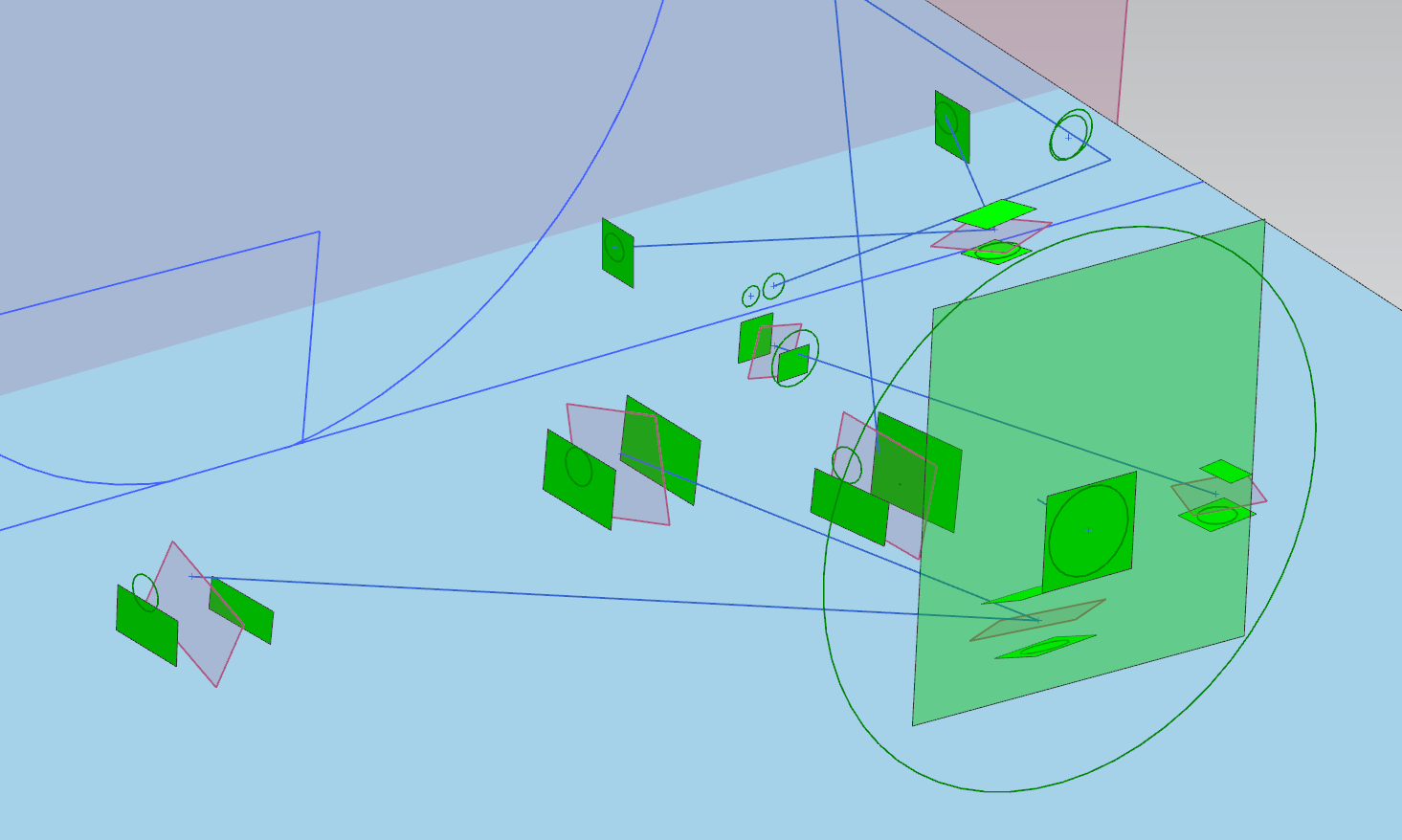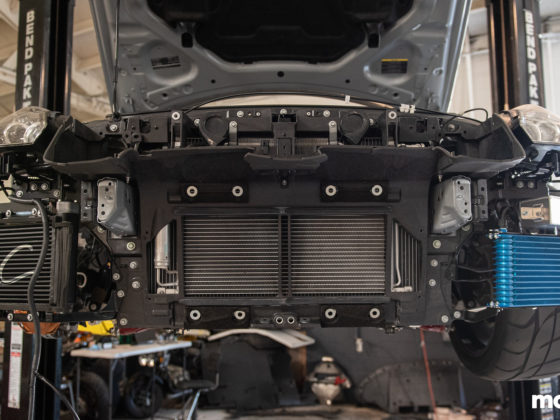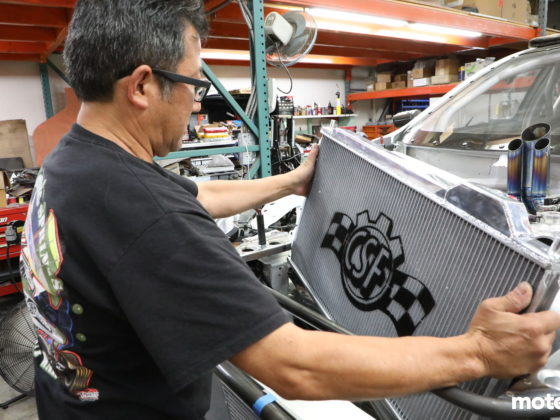
This involves measuring several points on the ground itself (to set the plane) and measuring at least two points on each of the lines (vehicle half wheelbase, vehicle four-foot center offset).
Then you can start to measure pick-up points.


I just clicked buttons on the computer when he told me to like a good little assistant.

There is a probe that has this little white ball on the end. The measuring head has a pistol-type hand grip and a green and a red button on it. You click the type of measurement you want to take with the computer mouse (for example, a plane). Then you touch the probe in several spots, pressing the green button each time you want to take a point. When you’re done, pull the probe away from the object or surface being measured and click the red button to tell the system you’re done.
The system will then provide a report of how “good” the measurement is. If you are trying to measure a plane, a plane should be pretty flat. If you measure a plane and the CMM arm thinks your measurements are super not flat, that’s a sign that something bad is going on, and you might want to re-calibrate your coordinates or check other things.
Given how sloppy things are with the set up we’ve put together, if measurements were thousandths or even hundredths out of spec, we were OK with it.
How might one measure a lower control arm pick-up?
Project SC300 has spherical bearings/rod ends for all of the suspension arms. Those bearings have two faces/races. If you draw a circle where each bearing face is and connect the circle’s center points, you establish the axis of the bearing. If you then find the center point of that axis, you have found the center point of the pick-up.
In CMM terms, you would:
- Take a few points to establish a plane on one side of the bearing
- Take several points to measure the circle that is that side of the bearing
- Repeat for the other side of the bearing
- Analyze the measurements later using CAD Software to find the midpoint of the two circles.
Establishing the plane first helps the CMM software understand what flat surface the circle should be mapped onto. If you don’t first take a plane before measuring the circle, the circle can end up being at a super awkward angle to reality, because the CMM is trying to guess where the circle intersects your measurements. If you take two circles that are at odd angles to reality (and not necessarily the same angle to each other) and try fo find their axis, that axis’ centerline may not intersect the true center of the pick-up point.
The CMM software does have a “cylindrical” measurement option. The procedure is almost identical (measure faces, circles, etc.). The end result is an interpolated cylinder, for which you could also find the center point. The cylinder measure route is potentially a little faster. It might be less accurate, but we didn’t do much comparison and stuck to the plane-circle-plane-circle method.
If I do this again, I’ll be asking ECM for a lot more advice than I did this time around.




11 comments
There’s places that will do tire testing and it’s… expensive but if you keep the test matrix down, in the 4-figures level. Would be interesting to add that to the mix. I’m figuring that most of the time in sims it’s not that the tire model itself has issues, just that it’s filled with variables that people are guessing at.
The most important thing is that the driver understands how the tire develops grip, and how to keep it at the proper temp. You can collect as much data as you want, but if the driver doesn’t understand that data, it is worthless. The pneumatic tire has been around for over a hundred years and there’s only one book written about it? Sad.
This is a must read for anybody serious about racing:
https://www.sae.org/publications/books/content/r-351/
Very interesting, great work Erik! I had no idea this type of equipment could be rented and used by near mortals.
The wheels are turning on other ways this type of equipment could be used.
@Dan: Where / who does the tire testing? I do have a spare that I could trash…
@Erik L: Oh yeah? What are you thinking of measuring/scanning?
Calspan does – if you are willing to be flexible on schedule and don’t get too complicated it helps hold the cost down, and the gent I was talking to was willing to deal with it as a smaller project.
Dan – if you find me on Facebook or email me at erikmjacobs (gmail) would you tell me who you spoke with? I’d be curious to talk to that person.
Mailed. Though as I mention in the email I just used the contact form at https://www.calspan.com/contact/ and they got back to me in a couple days.
Great article of the process. Well done.
Thanks Brad!
Yeah, I really like this article. I wrote my own code in MATLAB in college using Dixon’s equations and precise measurements (by hand) of the EG6 Civic suspension. I had so many parts lying around, it was pretty much a no brainer. You can learn how to avoid so many mistakes through simulation. While I did some minor modifications using a LCON traction bar which allowed me to remove the rear half of the LCA, and drop 8lbs of unsprung weight, I also gained enormous appreciation for Honda suspension engineers. The stock bump steer curve could not actually be improved upon without new spindles. Simulation proved to me that some things are better left alone.
This is a great book, BTW. It is the ‘Bible’ for suspension engineers.
https://www.wiley.com/en-us/Suspension+Geometry+and+Computation-p-9780470510216
Thanks, Joe! That looks like a real textbook there. Probably well over my head. As you’ve learned some things are best left alone, I have learned that for some things I should probably outsource. Suspension engineering is one of those things. I’m fortunate to have folks like Figs Engineering, Mike Kojima, and Rob Lindsey (Morlind Engineering) available to me!